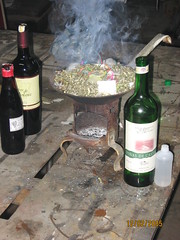Hasta Leugo Bolivia!
Well in less than 16 hours, I will be in the Cochabamba Airport waiting to catch my flight to Chile. After three months of being here, our time is up and I finally get to go to my placement site. These past three months have been amazing.
Even though I am full of excitement, I am fairly sad. Mainly becuase its "beginning to feel a lot like Christmas" and I am leaving my familia. Right now I think it is harder on them than it is me. They have really taken me in as a "son" and "brother."
Since today was my last day, they threw a small little get together and gave me my Christmas presents. They are as follows:
Shirts
Strongest Soccer Jersey
A sweater
A Coffee Cup
A Scarf
Basically they prepared me for the blistering cold Chilean winters. I cant wait for it. Oh yeah, and my niece also made me a homemade Christmas Card with some dinosuar on it.
Well, I think that is it for now. Talk to yall from Chile.
Well in less than 16 hours, I will be in the Cochabamba Airport waiting to catch my flight to Chile. After three months of being here, our time is up and I finally get to go to my placement site. These past three months have been amazing.
Even though I am full of excitement, I am fairly sad. Mainly becuase its "beginning to feel a lot like Christmas" and I am leaving my familia. Right now I think it is harder on them than it is me. They have really taken me in as a "son" and "brother."
Since today was my last day, they threw a small little get together and gave me my Christmas presents. They are as follows:
Shirts
Strongest Soccer Jersey
A sweater
A Coffee Cup
A Scarf
Basically they prepared me for the blistering cold Chilean winters. I cant wait for it. Oh yeah, and my niece also made me a homemade Christmas Card with some dinosuar on it.
Well, I think that is it for now. Talk to yall from Chile.


